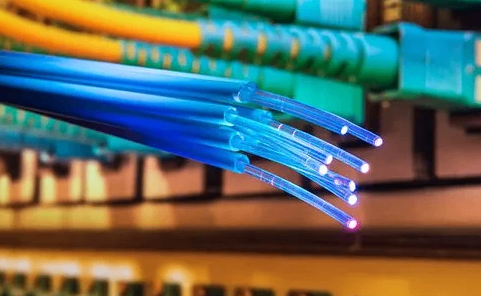Oufu Optical Fiber Cable Co.,Ltd
Address: Shenyang, Liaoning, China
Contact person: Manager Zhang
Phone: 400-964-1314
Mobile phone: +86 13904053308
【whatsapp && wechat】
2024-04-30 1906
Comprehensive Guide to Direct Burial Fiber Optic Cable: Features, Installation, Maintenance, and Applications

Introduction
In today's rapidly evolving digital and high-speed communication era, direct burial fiber optic cables have become crucial carriers for data transmission. Embedded directly into the ground without additional protective structures, these cables exhibit excellent physical and transmission properties, making them suitable for various complex environments. This comprehensive guide delves into the features, installation steps, maintenance measures, and applications of direct burial fiber optic cables.
Features of Direct Burial Fiber Optic Cables
Superior Physical Properties: Direct burial fiber optic cables are crafted with specialized materials and structural designs, resulting in remarkable compression, tension, and flexibility. These properties allow them to resist damage and degradation from external factors.
Outstanding Transmission Capabilities: Utilizing optical fibers as the transmission medium, these cables offer unprecedented bandwidth and transmission speeds, accommodating massive data flow.
www.adsscable.cn
Environmentally Friendly: Unlike overhead lines, direct burial cables eliminate the need for poles, reducing material and labor costs while minimizing environmental impact.
High Reliability: With excellent waterproofing, moisture resistance, and rodent protection, these cables maintain stable transmission performance in harsh environments.www.adsscable.cn
Installation Steps for Direct Burial Fiber Optic Cables
Route Planning and Surveying: Determine the cable's routing, laying method, and joint locations. Conduct ground surveys to provide necessary information for cable distribution, allocation, and installation.
Cable Length Reservation: Reserve a certain length of cable based on actual needs to facilitate future connections and maintenance.
Cable Inspection: Conduct a thorough inspection of the delivered cables and equipment, checking specifications, models, quantities, and external conditions to ensure quality compliance.
Cable Laying: Carefully lay the cables underground along the planned route, avoiding excessive bending or stretching.
Joint Installation: Install cable joints at designated locations, ensuring secure and reliable connections.
Backfilling and Compaction: After cable laying, conduct backfilling and compaction work to ensure the cables' stability and safety.
Maintenance Measures for Direct Burial Fiber Optic Cables
Regular Inspection: Conduct regular inspections of the cables, checking their appearance, joints, and surrounding environments for any changes.
Waterproofing and Moisture Resistance: Maintain a dry environment around the cables to prevent damage from water and moisture.
Rodent Protection: Install rodent-resistant measures around the cables to deter rodents from damaging them.
Fault Handling: Immediately locate and repair any cable faults or abnormalities to ensure continuous and stable communication.
Applications of Direct Burial Fiber Optic Cables
Urban Communications: These cables are extensively used for communication connections between cities, supporting video calls, online gaming, and massive data transmissions.
Smart Cities: In the construction of smart cities, direct burial fiber optic cables play a pivotal role in supporting intelligent transportation systems, city surveillance cameras, smart lighting, and environmental monitoring.
Military Communications: The military sector requires highly secure and reliable communication systems. Direct burial fiber optic cables meet these demands, ensuring the confidentiality and integrity of sensitive information.
Healthcare: The healthcare industry relies on high-speed and reliable data transmission for medical image transmission, remote diagnosis, and patient record management. Direct burial fiber optic cables play a crucial role in these applications.
Financial Industry: Financial transactions require extreme speed and data security. Direct burial fiber optic cables connect exchanges and financial institutions, supporting high-frequency trading and real-time data transmission.
Conclusion
Direct burial fiber optic cables serve as an efficient and reliable solution for data transmission in modern communication systems. Understanding their features, installation steps, maintenance measures, and applications allows us to harness this technology and further drive the advancement of digitalization and high-speed communications.